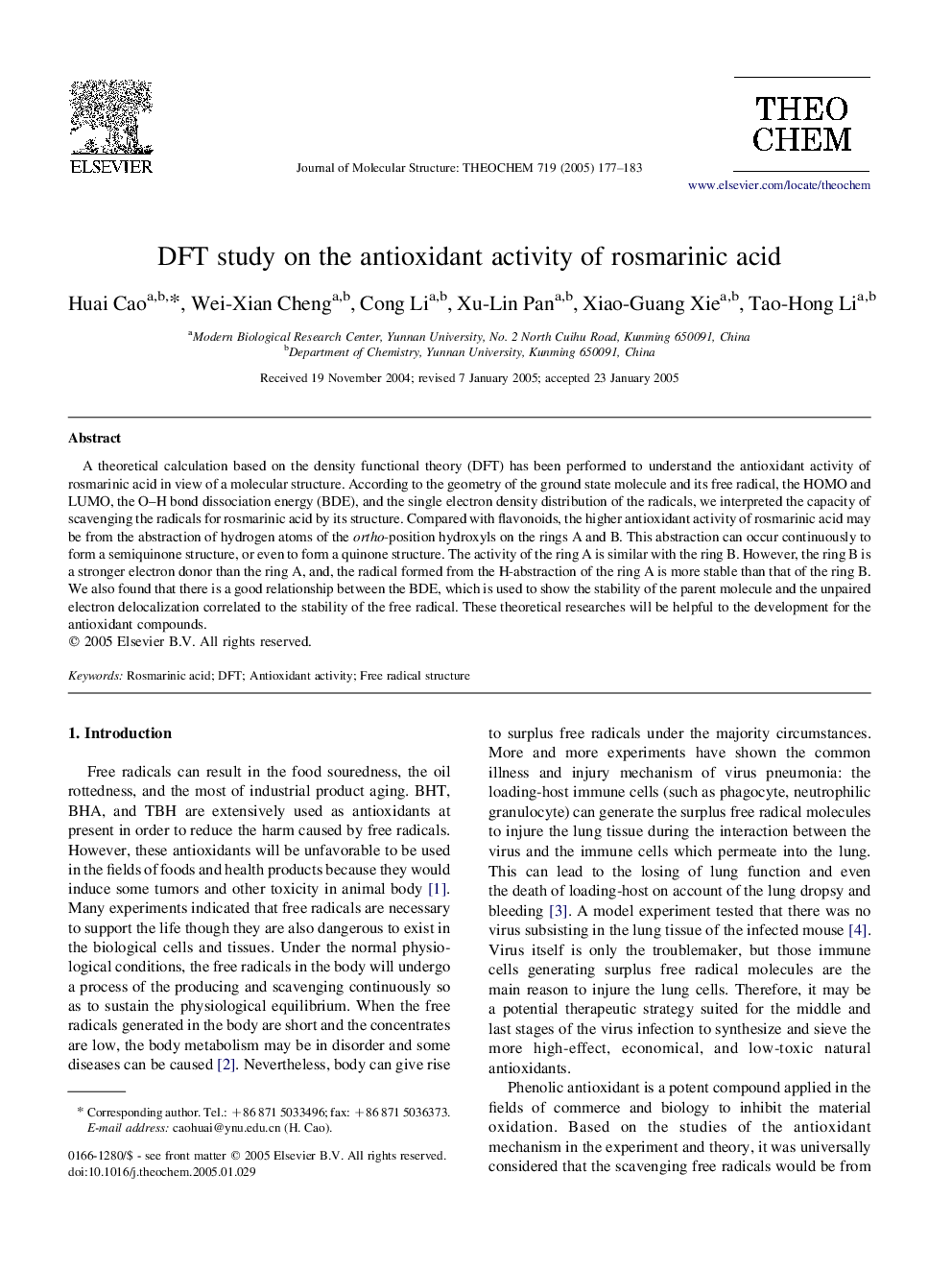| Article ID | Journal | Published Year | Pages | File Type |
|---|---|---|---|---|
| 9591838 | Journal of Molecular Structure: THEOCHEM | 2005 | 7 Pages |
Abstract
A theoretical calculation based on the density functional theory (DFT) has been performed to understand the antioxidant activity of rosmarinic acid in view of a molecular structure. According to the geometry of the ground state molecule and its free radical, the HOMO and LUMO, the O-H bond dissociation energy (BDE), and the single electron density distribution of the radicals, we interpreted the capacity of scavenging the radicals for rosmarinic acid by its structure. Compared with flavonoids, the higher antioxidant activity of rosmarinic acid may be from the abstraction of hydrogen atoms of the ortho-position hydroxyls on the rings A and B. This abstraction can occur continuously to form a semiquinone structure, or even to form a quinone structure. The activity of the ring A is similar with the ring B. However, the ring B is a stronger electron donor than the ring A, and, the radical formed from the H-abstraction of the ring A is more stable than that of the ring B. We also found that there is a good relationship between the BDE, which is used to show the stability of the parent molecule and the unpaired electron delocalization correlated to the stability of the free radical. These theoretical researches will be helpful to the development for the antioxidant compounds.
Related Topics
Physical Sciences and Engineering
Chemistry
Physical and Theoretical Chemistry
Authors
Huai Cao, Wei-Xian Cheng, Cong Li, Xu-Lin Pan, Xiao-Guang Xie, Tao-Hong Li,
